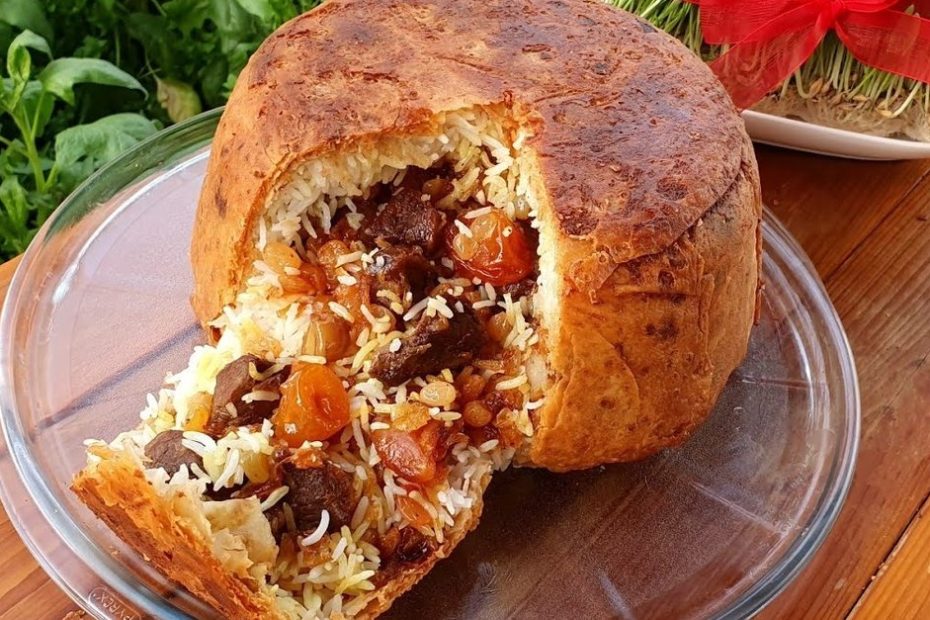Azerbaijani Pilaf Varieties: A Culinary Journey through Tradition
Pilaf, known locally as “plov” in Azerbaijan, is a beloved dish that holds a central place in the country’s culinary heritage. Azerbaijani pilaf is not just a simple rice dish; it is a reflection of rich traditions, regional diversity, and the importance of hospitality in Azerbaijani culture. Each variety of pilaf tells a unique story, combining ingredients like saffron, dried fruits, aromatic herbs, and meat to create a flavorful experience. In this blog post, we will explore some of the most popular types of Azerbaijani pilaf and the traditions behind them.
What Makes Azerbaijani Pilaf Unique?
Unlike pilaf in other countries, Azerbaijani pilaf is often served as a combination of two parts:
- Rice (plov): Cooked separately to achieve perfect fluffiness, often infused with saffron.
- Garnish or Topping (gara or govurma): A variety of accompaniments such as lamb, chicken, fruits, or vegetables, served on the side or mixed with the rice just before eating.
Another distinctive feature is the use of “kazmag” – a thin, crispy dough layer placed at the bottom of the pot, preventing the rice from sticking and adding texture to the dish.
Popular Types of Azerbaijani Pilaf
1. Shah Plov (Şah Plovu)
Known as the “King of Pilafs,” Shah Plov is a visually stunning dish often served at celebrations and weddings. It features rice, dried fruits, nuts, and meat, all enclosed in a golden crust of thin lavash bread. When sliced open at the table, the aromatic fillings pour out, creating a feast for both the eyes and the palate.
Key Ingredients:
- Saffron-infused rice
- Dried apricots, raisins, and chestnuts
- Lamb or chicken
- Lavash bread for the crust
2. Saffron Pilaf (Zəfəran Plovu)
This pilaf emphasizes the rich aroma and vibrant color of saffron, a key ingredient in Azerbaijani cuisine. Saffron threads are steeped in warm water, releasing their essence into the rice, giving it a golden hue. Often served with lamb or vegetables, this dish embodies the simplicity and elegance of traditional Azerbaijani cooking.
Key Ingredients:
- Rice
- Saffron threads
- Butter
- Lamb or chicken
3. Sweet Pilaf (Şirin Plov)
For those with a sweet tooth, Şirin Plov is the perfect option. This pilaf is often served at festive events and features a delightful mix of dried fruits and nuts. The sweetness of apricots, raisins, and honey, combined with the richness of buttered rice, creates a harmonious balance of flavors.
Key Ingredients:
- Rice
- Dried apricots, raisins, and almonds
- Butter and honey
- Saffron (optional)
4. Gara Plov (Qara Plov)
Gara Plov refers to a pilaf served with a rich meat stew made of lamb or chicken, sometimes accompanied by chestnuts, onions, and spices. The rice and stew are prepared separately and combined just before serving, ensuring that each element retains its flavor.
Key Ingredients:
- Rice
- Lamb or chicken stew
- Chestnuts and onions
- Spices like cumin and coriander
5. Dovga Pilaf (Dovğa Plovu)
This unique variety of pilaf is accompanied by Dovga, a yogurt-based soup with herbs such as cilantro, mint, and spinach. Although the soup is typically served separately, it complements the simple pilaf and provides a refreshing contrast to heavier meat dishes.
Key Ingredients:
- Plain rice
- Dovga soup (yogurt with herbs and greens)
Pilaf as a Symbol of Hospitality
In Azerbaijani culture, food is not just about nourishment; it is a reflection of hospitality and community values. Offering pilaf to guests is a gesture of respect and generosity. Pilaf is often served at special occasions such as weddings, Nowruz (New Year) celebrations, and religious holidays. It plays a role not only in festive meals but also in memorial gatherings, signifying unity and remembrance.
How to Serve Azerbaijani Pilaf
Traditionally, Azerbaijani pilaf is served on large platters, with rice and accompaniments presented separately. This allows guests to choose the portions and toppings they prefer. The dish is often enjoyed with yogurt, pickled vegetables, or Azerbaijani tea to complete the meal.
Azerbaijani Pilaf in the Modern Kitchen
While traditional pilaf recipes remain popular, many chefs today experiment with new variations, incorporating seafood, quinoa, or different vegetables into their dishes. These modern adaptations reflect the evolving nature of Azerbaijani cuisine, while still preserving the essence of traditional pilaf-making techniques.
Conclusion
Azerbaijani pilaf is more than just a dish; it is a culinary tradition that reflects the country’s history, culture, and hospitality. Whether it’s the luxurious Shah Plov, the fragrant Saffron Pilaf, or the sweet Şirin Plov, each variety offers a unique experience for the senses. If you ever have the chance to visit Azerbaijan, trying their pilaf should be at the top of your culinary bucket list.
Which Azerbaijani pilaf variety would you like to try first? Let us know in the comments below!
Enjoyed this article? Don’t forget to share it with fellow food enthusiasts!
Azerbaijani Pilaf Varieties: A Culinary Journey through Tradition
